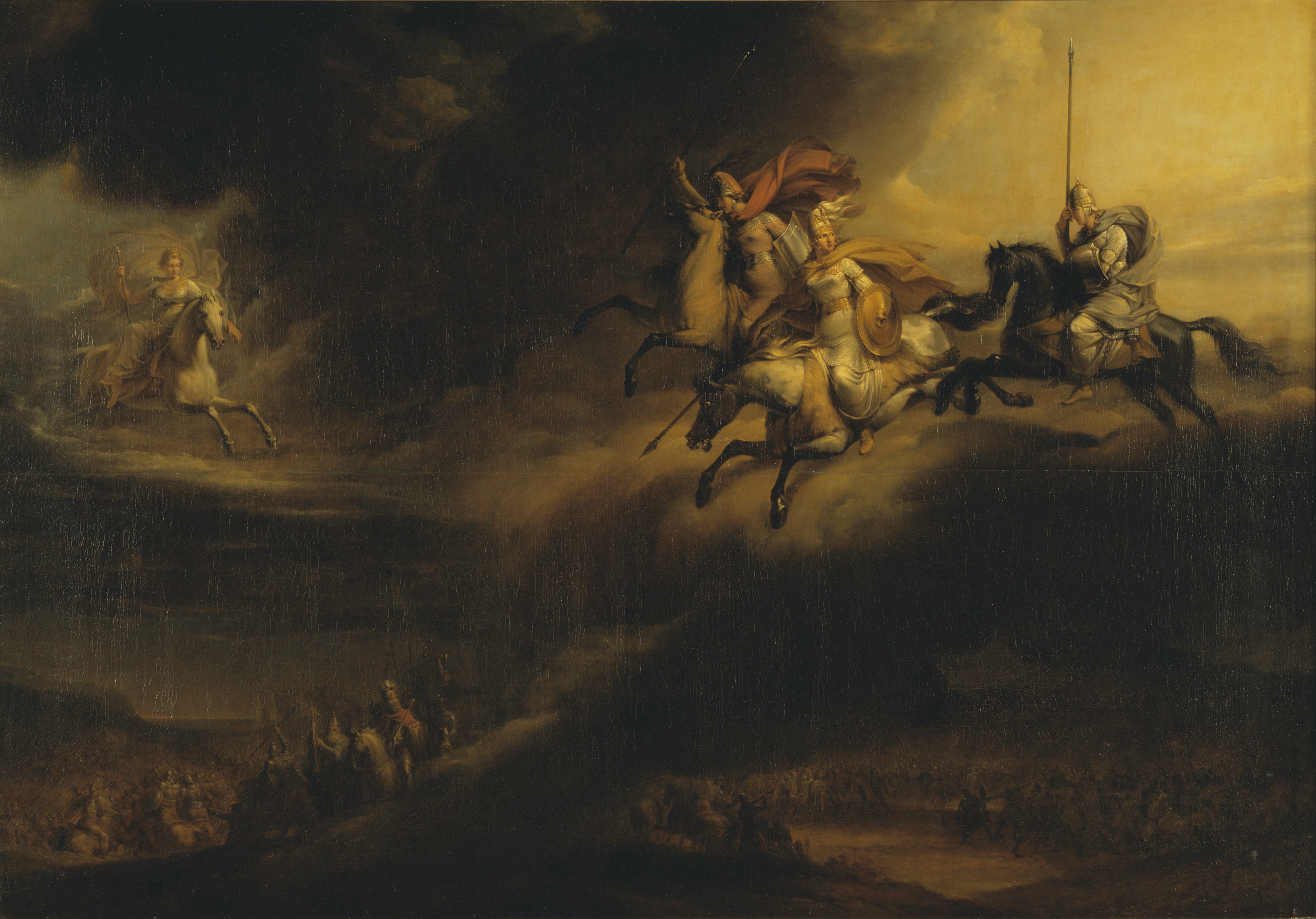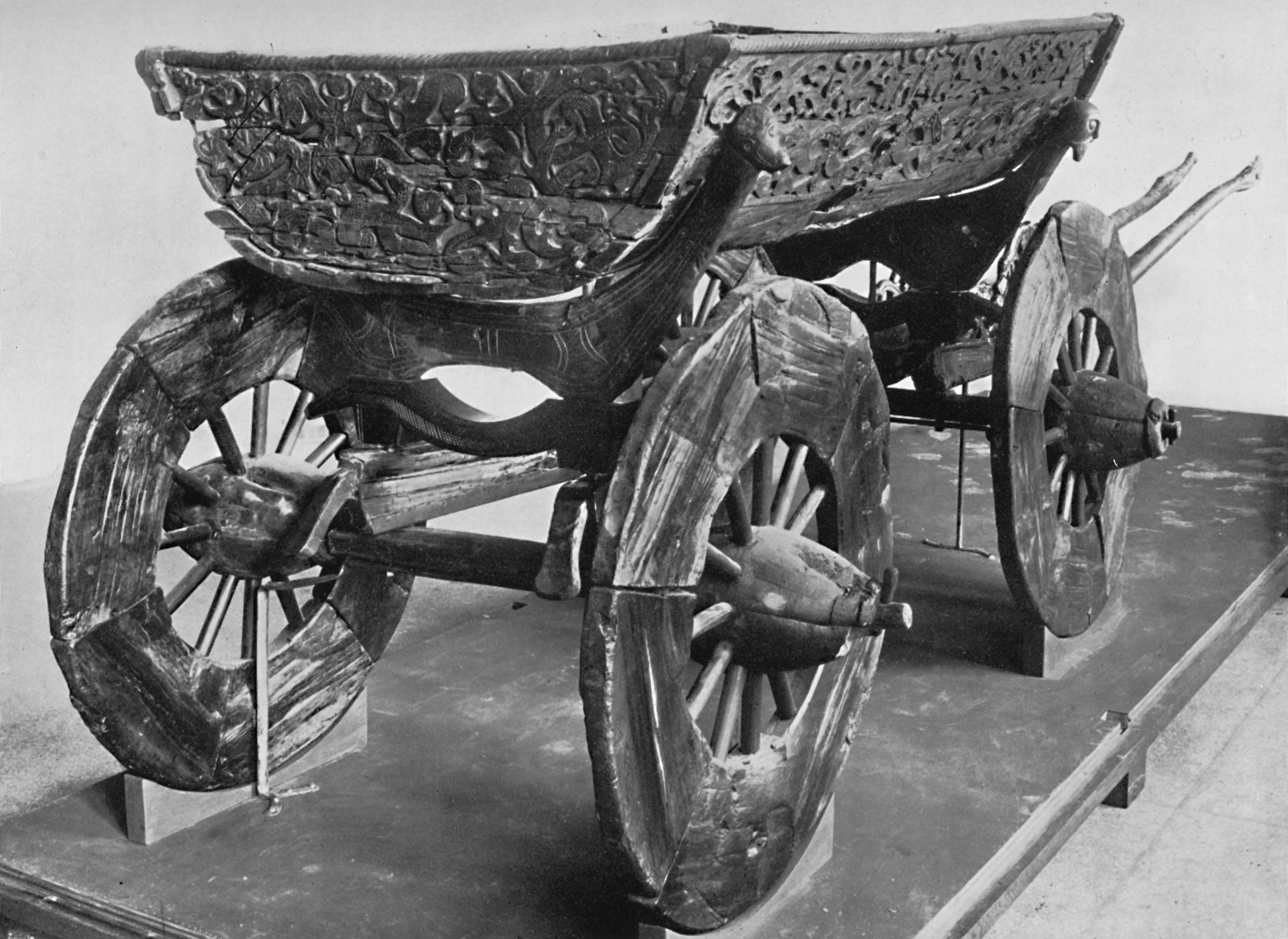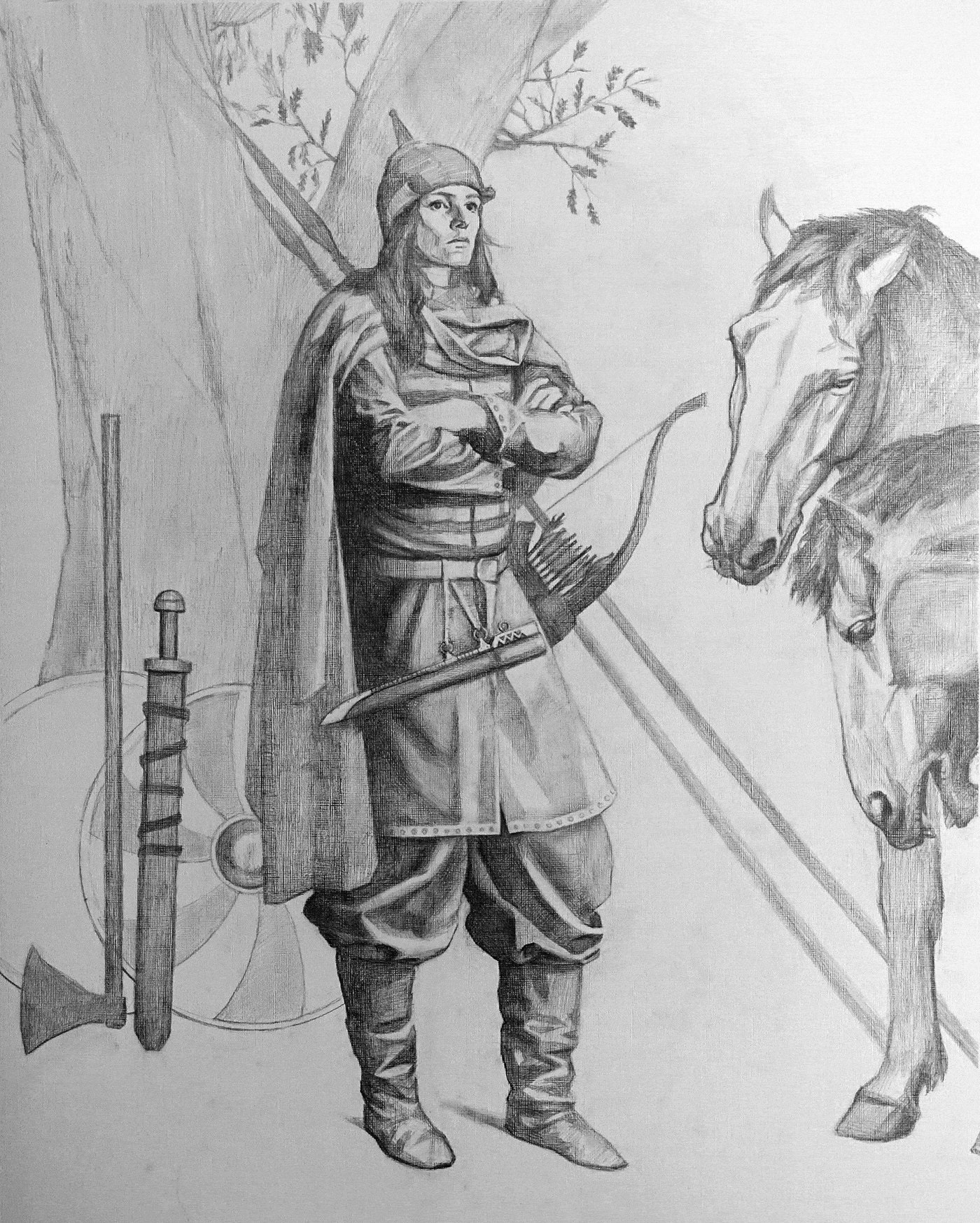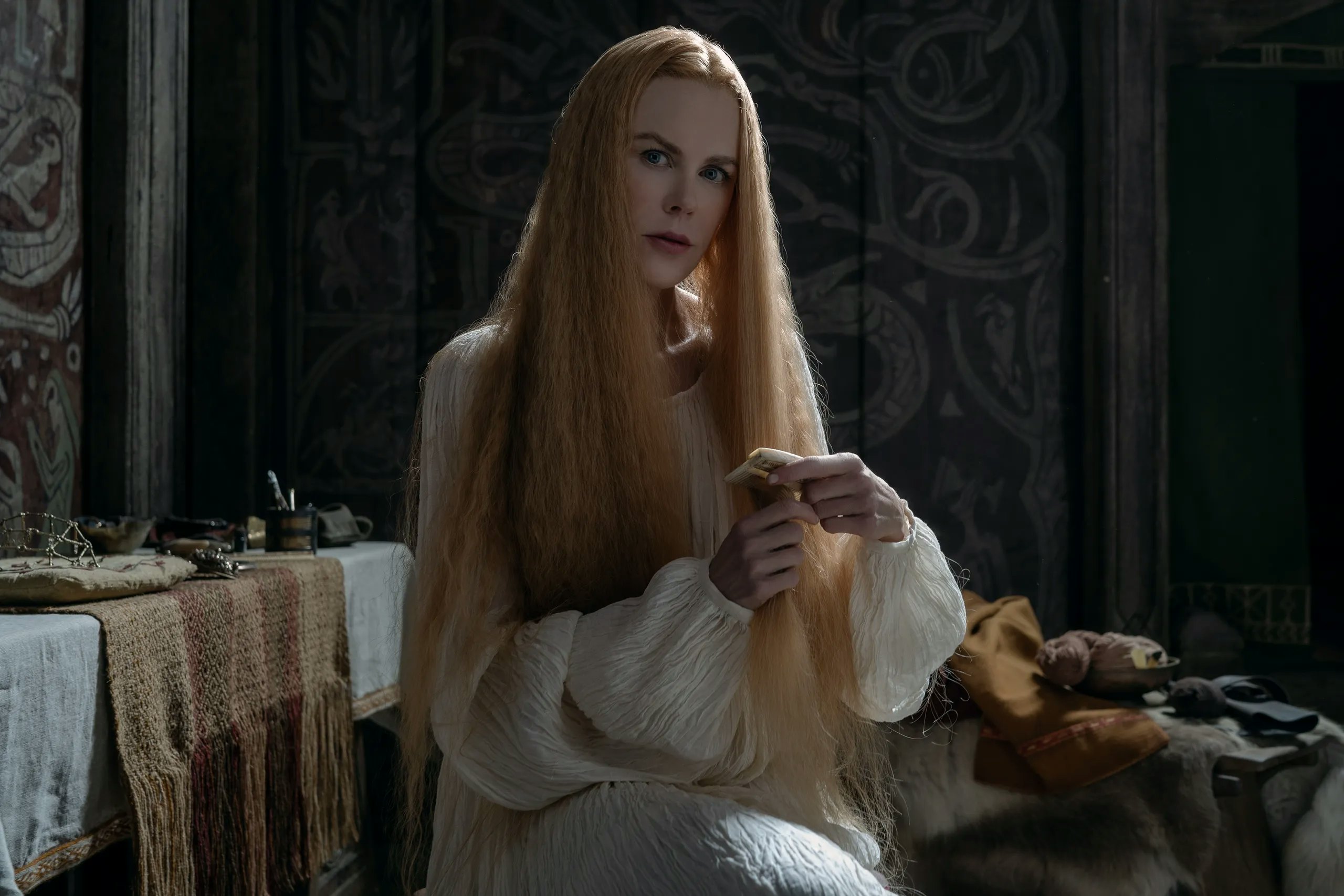
During the making of The Northman, Robert Eggers emailed Jóhanna Katrín Friðriksdóttir with a very specific question about Viking culture: Would it be historically appropriate if Nicole Kidman’s character, Queen Gudrún, engaged in tablet weaving?
For Eggers, whose historical fiction movies (The Witch, The Lighthouse) strive to give an accurate depiction of time and space above all else, it was standard research. But for Friðriksdóttir, a medievalist and the author of Valkyrie: The Women of the Viking World, the question represented a refreshing attempt to reflect the reality of most Viking women — and their mythological counterparts.
“It was definitely a reference to the actual lived experience of women in the Viking Age because they were constantly making textiles,” Friðriksdóttir tells Inverse. “But I thought it was also a reference to the Valkyries weaving the entrails of men.”

Vikings, and female Vikings in particular, are having a moment in 2022. In Thor: Love and Thunder, Natalie Portman returns to the Marvel Cinematic Universe to pick up Mjölnir and take the title of Mighty Thor, while Tessa Thompson’s Valkyrie takes on bureaucratic responsibilities as the king of New Asgard. Vikings: Vahalla, with its female warriors, remains one of the most popular shows on Netflix. And then there’s The Northman, with its seer, folk witch, stolen queen, and prophesized “maiden-king.”
While the allure of female warriors and maiden-kings is obvious, the feminine power displayed in pop culture doesn’t tell the whole story. How Viking women really lived and their influence on their society is an ongoing and hotly debated area of study. Legends, myths, and archeological discoveries are our clues. But some experts caution that modern perceptions of sex and gender can diffuse our interpretation of the past. The reality of Viking women is far more interesting and complex than mainstream understanding suggests.
The Viking Issue celebrates the glorious weirdness, diversity, and curious nature of everyone's favorite Scandinavian seafarers.
Brooches and swords
Marianne Moen, a researcher at the University of Oslo, believes that many academics have used archeological evidence to “extract a story that is just too simplified.” It’s time, she says, to step away from presuming there was one kind of Viking man — or one kind of Viking woman.
“The story we’ve built from brooches and swords is only one part of the story,” Moen says. “We need to reassess our understanding of Viking social order.”
Academics like Moen and Friðriksdóttir argue that the examination of historic women forces us to consider how modern assumptions can reframe history — an important endeavor when history is so often used to validate the present. In turn, that history is typically written by men in service of bolstering the power structures within their own cultural context. The dead don’t get the privilege of the final word — but some of the dead will have a lot more sway over the final word than others.
“I think we tend to under-evaluate the importance of the past, in both what it can tell us about ourselves and also in how it creates identity in the present,” Moen says. “We may try not to, but the stories we tell are the stories of ourselves.”
Sagas and myths

Vikings are undergoing a re-evaluation. Even how the word “Viking” is used is sometimes disputed. First recorded in English in 1807, the term is typically used today to describe the people of Scandinavia — a region that includes present-day Denmark, Norway, and Sweden — who lived around 750 to 1100 A.D.
Some researchers argue that technically only people from that region who raided other communities were Vikings, but it’s too late to abandon its popular meaning now. This discussion does help with understanding the aha moment in a 2020 study, which used ancient DNA to show being a Viking had more to do with one’s job than a shared genetic identity. This study helps break down the stereotype that Vikings were a monolithic people made up of white blonds.
“In my professional opinion, they were definitely not all white people, although several scholars in the 18th and 19th centuries helped perpetuate that myth, and it’s still upheld today in some pop culture,” says Jacob Bell, a Ph.D. candidate at the University of Illinois at Urbana-Champaign and author of the paper Magic, Genderfluidity, and Queer Vikings.
“Changing your name and pronouns suggests not everyone wanted to be in an incredibly limited role.”
Our understanding of Vikings stems from evaluating several sources, including grave sites, rune stones, the writings of people who encountered the Vikings, Norse mythology, and two essential bundles of literature, the Eddas and the sagas. The Eddas include Völuspá, a poem told from the perspective of a seer who predicts Ragnarök.
“In this poem, we get a lot of details about the Norse worldview,” Bell says. “One of the most important mythological texts is a woman speaking to us through the medium of a poem.”
The sagas, meanwhile, are considered a mix of folklore, myth, and history. The Icelandic sagas, for example, were written in the 13th and 14th centuries. These began as oral histories and mostly tell of the families who lived in Iceland from 930 to 1030 A.D. Some Icelandic sagas introduce us to spectacular female characters like Gudrid Thorbjarnardóttir — the “far traveler” — and Aud the Deep-Minded, a leader of settlers.

“They are both described as determined women who traveled far and wide during their lifetimes, breaking up the common idea of women staying at home while the men were away,” says Alexandra Sanmark, a professor of medieval archeology at the University of Highlands and Islands.
We don’t know how true or reliable the sagas really are, but archeological evidence supports the idea that Viking women traveled — a reality counter to the presumption that they stayed home while men went out to trade and raid. We also know women were essential to the management and success of Viking settlements.
Queen Gunnhild, known as the “mother of kings,” also appears in the Icelandic sagas. Some interpretations of her story make her, her magic, and her plotting to be almost villainous, but what Friðriksdóttir sees is a woman who was very good at politics and at anticipating possible threats.
She is considered a quasi-historical figure — it’s difficult to know how much of her story is true. But signs of grand women who were respected are in the archeological record: For example, the Oseberg grave, described by Friðriksdóttir as “likely the most magnificent Viking grave,” contains the bodies of two older women who likely held positions of power. Their bounty includes a wagon with cats carved into it — a curious object which may suggest these women honored Freya, the god-wife of Odin whose chariot was pulled by felines.

There’s also a 14th century sub-genre of the sagas referred to as the “maiden king” sagas. In The Northman, Amleth receives a prophecy that his child will be a “maiden king” and viewers later see a vision of a girl in a crown. In reality, no evidence yet of female Viking kings. But the “maiden king” sagas may reflect anxieties about the erosion of traditional gender roles, Friðriksdóttir explains.
The maiden-king narrative typically follows a noble female protagonist who wishes to rule and not marry but ultimately ends up in a marriage. For example, in one story, a young woman reveals that she feels that she is a man and persuades her father to give her part of the kingdom. She goes there, holds court, and changes her name. It’s in this part of the story, Friðriksdóttir says, that all of the pronouns in the saga change from she to he. He then kills all of the suitors — until he is eventually bested and marries the challenger.
“There are a fair amount of sagas which follow this pattern, and they may be about a lot of things, including an anxiety over what would happen if there was only a woman to inherit,” Friðriksdóttir says. “But perhaps this idea of changing your name and pronouns suggests not everyone wanted to be in an incredibly limited role.”
Norse mythology does not always tie female power to male supremacy. Valkyries are warrior maidens who would boast that they could control who lives and who dies. While their portrayal sometimes differs across texts, they are always “free from the norms of human society,” Friðriksdóttir says.
There are echoes of Valkyries in depictions of human women, she says. When a woman tells a man to avenge their family, is it she who is causing this death — or is it the man committing the deed? Friðriksdóttir connects this idea to a story told by a cleric in the 800s who witnessed an attack on Paris: He wrote that alongside the Viking invaders were women who weren’t fighting — but they were egging the men on.
Examining gender through Viking graves

How fluid gender roles really were is a topic of some dispute. Traditionally, in Viking Age archeology, “sex and gender categories were explored from a modern-day Western perspective,” says Ben Raffield, an associate professor at Uppsala University.
This means the items found in graves were used to determine if the remains were male or female. However, in the last 30 years, “researchers have sought to acknowledge and adopt more nuanced frameworks for the study of gender,” Raffield says.
This group of researchers includes Moen, who points to the issue of brooches and swords. In many cases, assessing biological sex through bodily remains is challenging. Accordingly, the discovery of brooches within graves is typically used to indicate the resting place belongs to a woman, while the finding of weapons indicates it belongs to a man.
But Moen says many objects are found in both graves, including kitchen equipment, tools like knives, and sacrificed horses — suggesting to her the potential of shared social roles regardless of biological sex. Furthermore, when she evaluated 218 graves in Norway, a quarter did not include brooches or swords, which meant it was impossible to decide if they represented a male or female person.
“We can never know what the people in the past thought about themselves.”
Illustrative of how the brooches and swords approach can complicate the interpretation of an archeological discovery is the case of the Birka warrior. In 1878, a Viking grave was found in Birka, Sweden, containing the equipment of a professional warrior. Based on what was in the grave, the human remains there were presumed to be male. However, in the 1970s, a researcher observed the bones had female characteristics. In 2017, scientists extracted DNA from the remains and confirmed the body was female.
“The existence of female warriors in Viking Age Scandinavia has been debated among scholars,” the authors of the now-famous paper. “Though some Viking women buried with weapons are known, a female warrior of this importance has never been determined, and Viking scholars have been reluctant to acknowledge the agency of women with weapons.”
Viking scholars were also reluctant to acknowledge women with weapons after this study, so much so that its authors released another paper in 2019 considering the “public debate” around their work, while still defending their findings. However, some experts remain unconvinced that the woman in the grave was a warrior. For example, in an article for the British Museum, Judith Jesch, a professor of Viking studies at the University of Nottingham, wrote “I find thing the one thing I get asked about most often [about Viking women] is the one thing I do not think they ‘achieved,’ which was to become warriors.”
Friðriksdóttir takes issue with the public interpretation of the burial and the breathless headlines about female Viking warriors that accompanied the discovery. She doesn’t find it hard to believe that people would be willing to accept a female warrior. Still, complicating factors — such as the fact that sometimes small children were also buried with weapons — make it difficult to have much confidence either way.
“This person may have been a warrior woman; they may have been a transgender person; this may represent some kind of offering in lieu of a warrior,” she says. “We just don’t know.”

Moen thinks female warriors existed but does agree that a sword in a grave doesn’t necessarily mean the person alongside it was a warrior. However, she says that we must reassess past judgments if graves are approached through this view.
“What I’ve said all along is that I think weapons in a burial may not denote warrior status,” Moen says. “But I think that means we need to go back and sort out the last few hundred years of Viking scholarship because if a sword doesn’t mean a warrior, then we’ve got an interpretive problem with the stories we told so far.
“Which is fine, we can do that,” she adds. “But you can’t do it for one grave and not the rest of them.”
Moen also subscribes to a school of thought which suggests Vikings had a “much more fluid approach to gender and that gender was perhaps more social than anchored in bodies.” This idea connects to a seminal 1993 article written by Carol Clover, a professor of medieval studies and American film at the University of California at Berkeley. In it, she argues that Vikings perceived gender as a spectrum and that “an individual’s status within this spectrum was dependent on a range of social factors, including not only biological sex but also one’s social status or their roles within the community,” Raffield explains. Power and a Viking version of “masculinity” were perhaps awarded to those who were bold and brave, regardless of the type of body a person had.
Sanmark remarks that this “model is compelling in one sense, as it does give credence to individuals.” It is fair to say that status, personality, and chance all played a part in the course of a person’s life. But in the last five years, she says that this idea of a one-gender society has increasingly been questioned due to lack of evidence.
“Instead — and this has been shown by scholars after very detailed studies of sagas and laws — there seems to have been clear distinctions between men and women,” Sanmark says.
These distinctions, however, were less barefaced if a woman was of a higher status. For example, widows who owned land seemingly had “almost the same rights as landowning men,” she explains. This is why Sanmark argues that it’s unhelpful to describe Viking women as a whole because, much like women today, their power and influence varied according to their circumstances.

Raffield, who has studied the role of polygyny and concubinage in Viking society, says there were likely people whose identities existed outside the boundaries of modern gender binaries. But ultimately, while women could be born into status positions, he thinks “their influence was nevertheless entwined with and perhaps contingent on their ability to negotiate or navigate patriarchal structures.”
Ulla Moilanen, a postdoctoral researcher at the University of Helsinki, says archeological evidence suggests Viking society had “certain expectations” for men and women.
“However, we should consider how rigid these roles were,” Moilanen says. “Were they as inflexible as they sometimes are portrayed? We have a lot of evidence that gender roles could, in some circumstances, be flexible or fluid, so we should work toward a more nuanced picture.”
Her work underscores this: Moilanen is part of a study team that analyzed another grave with weapons. When it was discovered in 1968, it was presumed to contain a woman buried with two swords. The individual was dressed in feminine clothes and laid to rest with brooches.
But when Moilanen and colleagues studied the ancient DNA extracted from skeletal remains, they identified the chromosomes XXY — a signature feature of Klinefelter syndrome, in which a male is born with an extra copy of the X chromosome.
Because sex is different from gender — and scientists simply have clues that help decode the past, no solid answers — it’s difficult to understand how this person navigated Viking society.
“We cannot see someone’s identity or sexual orientation from their bones or genes, and we can never know what the people in the past thought about themselves,” Moilanen says.
One possibility put forth by her team is that these remains may represent an acceptance of nonbinary gender identities: While this person seemingly did not fit into a binary model, they were still given the burial of a highly respected person.
Who Viking women really were

Despite the public fascination with Vikings and a dedicated, longstanding effort to study them, there is still much we don’t know. Some of this mystery stems from how we interpret and encounter the past: Beyond the problem of modern assumptions distorting history is the fact that the sagas and Eddas contain their own biases about gender rooted in their cultural context.
Early Viking scholarship also contains its own biases. The academic discipline came into its own in the 18th and 19th centuries, essentially by “white men wanting to know about older white men,” Bell says. From the beginning, women were presumed to have a supporting role in this story.
Today, we still “don’t know enough about the conditions of lower-status women and men,” Raffield says, “and there’s a need to better understand lateral power structures.”
The different ways power can be exerted beyond violence is what especially interests Friðriksdóttir, who recalls when she realized there wasn’t a book about Viking women and the mixture of astonishment and annoyance she felt when she found signs of them in niche publications.

“I wondered, ‘Why did no one ever tell me about this? Why has no one written about this really cool character who has all this agency?’” Friðriksdóttir says.
A lot has changed for the better since then, Friðriksdóttir says. Viking women are not an afterthought, and we understand that the world they lived in was more dynamic than the yesteryear images of brutal men and their passive wives. We know that, like today, biological sex did not always determine an individual’s personhood and path. We understand that, like women today, they can’t be generalized.
When Friðriksdóttir finally saw The Northman, what she was dazzled by most was not the nude battle scene at the base of a volcano or the whispered prophecy of a “maiden king” uttered from Björk’s lips. Instead, it was when a Gudrún — a wife and a weaver — reveals she does not need her son to save her, despite the act being key to his revenge fantasy.
“I couldn’t look away from that scene,” she says. “Her actions were much truer to the sagas than his imagined outcome.”







